THE VIETNAM PARTICIPATION MEDAL 월남 참전 기장
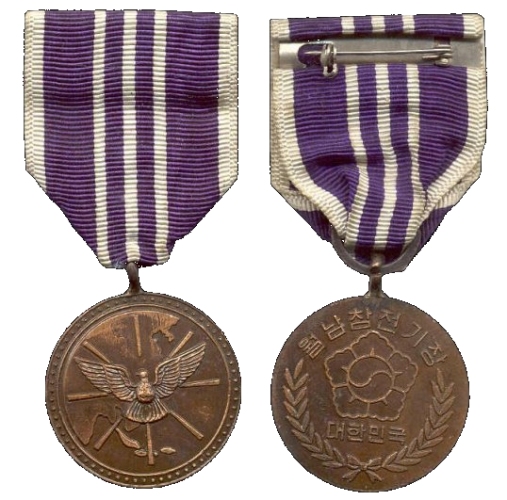
Currently found in three types
- Type 1 – Original strike 32.5 mm Dia.
- Type 2 – Original strike 33 mm Dia.
- Type 3 – Current reproduction
The Vietnam Participation Medal was established by Presidential Decree #2661 on July 7, 1966, and was later amended by Presidential Decree #4932 on Apr. 20, 1970. The medal was awarded to military personnel and civilians attached to the military command in Vietnam. It was also awarded to military personnel or civilians who were engaged in the transportation of military power or war supplies, or whose overall military business supported the anticommunist operations in Vietnam. The Ministry of National Defense could also award the medal to a civilian who was not attached to the military, but whose work supported anticommunist operations. This included individuals working in the communications and news industries. The medal was accompanied by a document, which the recipient was required to carry whenever they wore the medal. Recipients, who lost either the medal or the document, were required to report it to either the civilian or military police.
On Jun. 21, 1961, a ROK Military Assistance unit was established in Vietnam, and on Sept. 11, 1964, the first Korean combat troops were dispatched. What started out in 1964 as a 200-man ROK survey (liaison) team quickly became a military combat unit of 50,000 troops. By December 1972, more than 300,000 ROK soldiers had served in Vietnam, not counting many Korean civilians. As a direct result of the Vietnam War, Korea awarded some 28,433 Orders, Medals, and Decorations.1 In March 1973, the last Korean troops were pulled out of Vietnam.2
White Horse Division
The White Horse Division served in Vietnam from September 25, 1965, until it withdrew from the Republic of Vietnam on March 7, 1973. It was subsequently reorganized as the 3rd Field Army and stationed in the Taegu Metropolitan City on June 30 of the same year. The ROK Army in Vietnam was officially disbanded at that time. During the war, it was headquartered in Saigon (now Ho Chi Minh City), the capital of the Republic of Vietnam. The ROK military withdrew from Vietnam after the Paris Peace Agreement of January 27, 1973.
The original Nov. 3, 1950 unit insignia was three diamonds within a circle and at the time, the division was referred to as the Ruby Division. The circle was divided into three sections, signifying the 28th, 29th, and 30th Infantry and artillery Brigades that make up the division. The insignia was changed on Aug.15, 1951, possible because of the similarity to the Mitsubishi logo. The insignia was changed to a “9” within a circle, indicating that it was the 9th Division. During the Korean War, the Division was defending Hill 395. It is said that the hill had been bombed so many times that it was lowered by a full meter, and resembled a white horse lying down. During the defense of the hill, the Koreans captured a North Korean officer, who did not want to be involved any further in the fighting, so he betrayed his comrades and revealed an impending large-scale attack. Although heavily outnumbered, the 9th division was able to hold their position against the attack. The Division Commander received the title of “Always Winning” 상승 (常勝) from the President of the Republic of Korea, Syngman Rhee. After the battle of White Horse Hill, the division received a new unit insignia on Jan. 15, 1953., that of a white horse, laying down, in a trisected circle, on a field of blue. This insignia design was officially changed on Nov. 3, 1982 and shows a horse rearing up and kicking its front legs. However, the rearing horse design was used before its official change. The combat/camouflaged insignia is colored black and dark green. Soldiers jokingly call it the Black Horse Division. Discharged soldiers, wearing camouflage uniforms, generally use the Blue and White Insignia. There are nine points in the horses’ tail, which supposedly refer to the 9th Division.
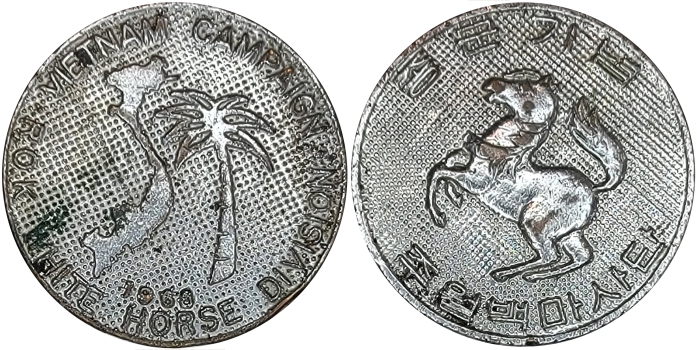
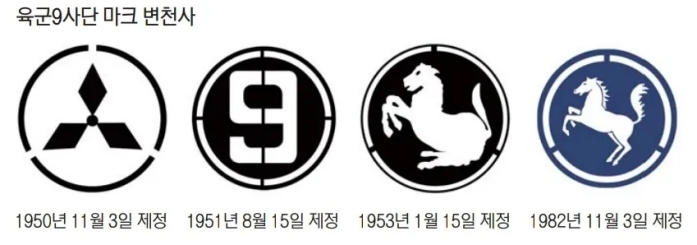
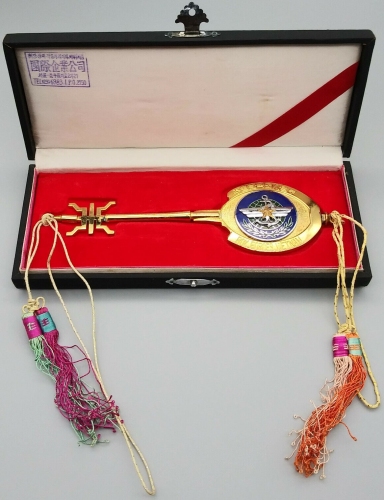
A Condensed History of South Korea and the Vietnam War
South Korea was more heavily involved in the Vietnam War than most people realize. The Vietnam War initially started with the First Indochina War, fought between the French army and the Viet Minh from 1946 to 1954. In January 1954, the Syngman Rhee government, while still recovering from the Korean War, offered to dispatch one division of the Korean army to Vietnam. However, in May 1954, the Battle of Dien Bien Phu ended in an overwhelming victory for the Viet Minh, and eventually led to the Geneva Conference in June 1954 and the Geneva accords that took place on July 21, 1954. The United States, concerned about a communist domino effect on the Indochina Peninsula, consulted the Syngman Rhee regime and discussed sending three divisions of the Korean army. However, France objected to the offer of troops. In Vietnam, Ngo Dinh Diem consolidated his power as the President. He declined to hold a national election to unify the country, as called for in the Geneva Accords and agreed upon by both North and South Vietnam. Because of South Vietnam’s refusal to hold a general election hosted by the United Nations, there was no justification for UN intervention, and ultimately UN troops could not be dispatched to the Vietnam War. The Vietnam War was a civil war, meant to establish a unified nation, and there was no legitimate justification for the United States’ intervention.
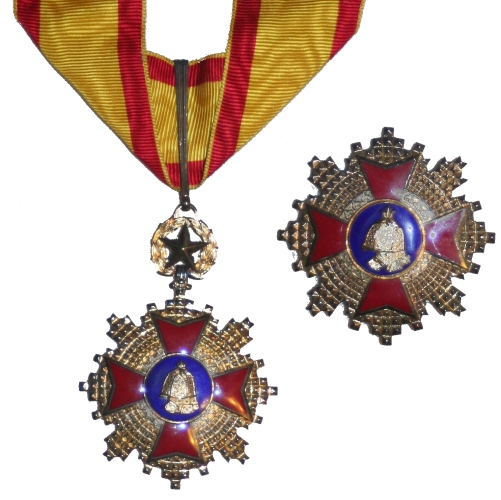
President Dwight D. Eisenhower had an ongoing feud with Syngman Rhee concerning the Korean War Armistice Agreement. Syngman Rhee and his government refused to sign it. In 1954, Rhee was still advocating for the resumption of the Korean War and a forced unification of the Korean Peninsula. President Eisenhower viewed Korea’s proposal to send troops to the Indochina War negatively, and he considered it to be in line with the Rhee’s plans for re-unification. The Eisenhower administration had promised disarmament to the American people, which made it difficult to accept Syngman Rhee’s hard line stance. President Syngman Rhee continued to seek links with Vietnam, even after discussions on sending troops failed. In 1958. President Syngman Rhee visited South Vietnam and discussed military and economic cooperation with President Ngo Dinh Diem, and in 1959, a Taekwondo demonstration team visited South Vietnam. When President Syngman Rhee was forced to step down due to the April 19 Revolution, the discussion on sending troops to Vietnam had not come to fruition.3 It did, however, provide a starting point for the discussions and plans implemented later during the Park Chung-hee administration.
In the early stages of the Vietnam War, the United States viewed the Park Chung-hee military government as having no legitimacy because on May 16, 1961, it had seized power in a democratic nation, through a Military Coup. The primary reason that the U.S. military had fought in the Korean War was to keep Korea a democratic nation. Park Chung-hee wanted desperately to change the attitude of the Kennedy administration concerning the legitimacy issue. He was well aware of how Japan was able to recover from World War II, when it provided assistance to the United Nations Forces during the Korean War. Park Chung-hee knew that assisting the U.S. in the Vietnam War would have significant value to the Korean economy. He repeatedly communicated his intention to send Korean troops to the Vietnam War. Park Chung-hee because he was not the President of Korea, but the Chairman of the Supreme Council for National Reconstruction, made an “Informal Visit” to the United States from November 12–23, 1961. He asked President John F. Kennedy to allow Korea to help South Vietnam. Kennedy showed no interest in Korea’s proposal. The Park Chung-hee government offered military assistance to Vietnam several more times, but the United States continued to reject them.
Most studies conducted before the 1980s claimed that Korea responded to pressure from the United States for the dispatch of troops to Vietnam. However, U.S. State Department documents and Korean diplomatic documents confirm that Korea had actively promoted the deployment of troops to Vietnam before the U.S. request. Until the end of 1964, the Johnson administration was not very favorable in the dispatch of Korean combat troops. However, as the situation in Vietnam continued to spiral out of control, the Johnson administration’s thoughts on sending Korean combat troops also changed. At a press conference, then President Lyndon B. Johnson called on its Allies to participate in the Vietnam War and advocated the “Many Flags Campaign.”4
The Gulf of Tonkin incident consisted of a confrontation on August 2, 1964, when United States forces were carrying out covert amphibious operations close to North Vietnamese territorial waters. This triggered a response from North Vietnamese forces. The United States government falsely claimed that a second incident occurred two days later, on August 4, 1964, again between the North Vietnamese and the United States forces. Subsequently, the US Congress granted military action authority to President Johnson, dramatically changing the nature of the war. By this time, Korea was no longer under a Military regime because Park Chung-hee had been democratically elected as the President of South Korea.5 William Bundy, the U.S. Assistant Secretary of State for Far Eastern Affairs, requested the Korean government to send non-combat units to Vietnam. On December 19, 1964, Ambassador Brown met with President Park Chung-hee and delivered President Johnson’s message requesting the dispatch of non-combat troops. Afterward, in March 1965, the Korean government dispatched 2,000 non-combat troops, including engineers (commonly referred to as the ‘Dove Unit’). At a joint meeting of the U.S. National Security Council held on April 1st and 2nd, 1965, it was decided to send 150,000 U.S. troops and 21,000 South Korean troops to South Vietnam. At the time, the United States, which was short of combat troops for Vietnam and wanted to dispatch the 2nd and the 7th Infantry Divisions which, at the time, were both stationed in South Korea. President Johnson was also considering the reduction of military and economic aid to Korea. This would have created a military vacuum on the peninsula and would result in an increased security risk for South Korea. In the 1960s, South Korea was, economically and militarily, far behind North Korea. The threat of a possible new civil war with North Korea, resulted in South Korea proposing to the U.S., “We’ll send troops instead of you!” The United States agreed to this. In September 1964, the Korean government dispatched 130 mobile surgical hospital personnel and 10 Taekwondo instructors to South Vietnam. Under the wartime alliance with the United States, South Korean had significant economic growth due to U.S. financial assistance. This included grants, loans, subsidies, technology transfers, and other advantageous economic policies. In time, Korea would also send:
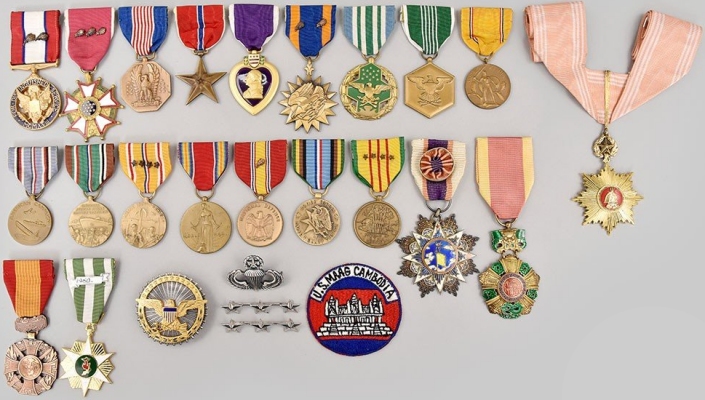
He served in the Korean Military Headquarters in Wolwon 육군본부주월미군사, Vietnam and was awarded the Order of Military Merit, Chungmu Class on 6/19/1968.
- Vietnam War General Headquarters, Korean Military Headquarters in Wolwon
- Army Capital Division (Maengho Unit)
- 9th Infantry Division White Horse Unit
- Capital Division Fierce Tiger Unit
- Construction Support Group Dove Unit
- 2nd Marine Brigade, Blue Dragon Unit
- Naval Transport Squadron Baekgu Unit
- Air Force, 55th Air Transport Group, Silver Horse Unit
- 100th Logistics Command Cross Star Unit
Eventually, 346,393 Koreans (304,760 army) participated in the Vietnam War and carried out 563,387 operations over 8 years from September 1964 to March 1973. According to the official military history, the number of Korean military casualties and deaths in the Vietnam War was 5,099. This included those killed in the line of duty, those who died accidentally, those who committed suicide, and those who are missing in action. The South Korean government recognizes only 8 individuals as being missing in action. However, it still treats them as war dead. Some of these missing in action, were actually held in POW camps in North Korea for years after the Vietnam War finished. At least two captured soldiers delivered speeches on North Korean Radio. To this day, the number of MIA’s taken to North Korea, and their fate, are unknown. At the time of the first Korean deployment of non-combat troops, domestic public opinion was favorable. The slogan for the Vietnam War at the time was, ‘The Vietnam Front is an extension of the Armistice Line.’ It was based on the domino effect that the U.S. government was pushing at the time and contains two arguments: ‘If South Vietnam becomes communist, Korea will not be safe,’ and ‘The Vietnam War is a parallel extension of the Korean War.’
There are quite a few instances where the Viet Cong and North Vietnam military gave orders stating, ‘If there is no guarantee of victory, never fight and avoid the Korean army.’ The bravery of the Korean army was famous even among the allies. The reason the Korean military fought so well is that it was the first overseas deployment in the history of the Republic of Korea, and so they prioritized those with the best combat skills when sending troops. Keep in mind, that the American soldiers were often conscripts and deployed to Vietnam even if they had no desire to be there. The Koreans, on the other hand, sent elite troops. In addition, Korea had learned during the Korean War that partisans and guerrilla forces can only survive by gaining public support. So, it was important for the South Koreans to turn public support in Vietnam toward themselves. The Korean military put securing public sentiment as its top priority and paid great attention to public operations and support. During the war, the Korean military provided public medical care to 3,523,364 people, 19,640 tons of food, 461,764 items of clothing, 6,406 pieces of farming equipment, and houses and equipment. They also provided 3,319 classrooms, 132 bridges, 394 km of roads, Taekwondo classes for 902,060 people, 6,848 parties for senior citizens and children’s parties, and 2,304 entertainment performances. The Korean military was more widely known for its civil operations capabilities than its combat capabilities. Keep in mind that Korea at the time had an agrarian economy and had a high level of understanding Vietnam’s rural culture and farming. A significant number of Korean soldiers were young people who had farming experience.
The deployment of troops to the Vietnam War was Korea’s first overseas deployment and was an event that enabled Korea to achieve a phenomenal level of economic growth. Participation in Vietnam allowed Korea to gain the better diplomatic relations with the United States. It also served as an opportunity to increase Korea’s international status and diplomatic capabilities overall. It was a pivotal event in South Korean history and had a significant impact. It is considered a major milestone in the status of modern Korea.
Footnotes:
- Ministry of Government Information, Decorations Overview, (賞勳使覽) 12, 1984, p.255
- Vietnam Order of Battle, By Shelby L. Stanton, New York, New York, 1987, Galahad Books, Pp.272-273, 333.
- The April 19 Revolution (4.19 혁명), was a series of mass protests in South Korea against President Syngman Rhee and the First Republic. They lasted from April 11 to 26, 1960, and forced President Rhee’s resignation.
- Officially South Vietnam was aided by 6 countries, these were Australia, New Zealand, Philippines, South Korea, Thailand, and the United States.
- October 15, 1963
